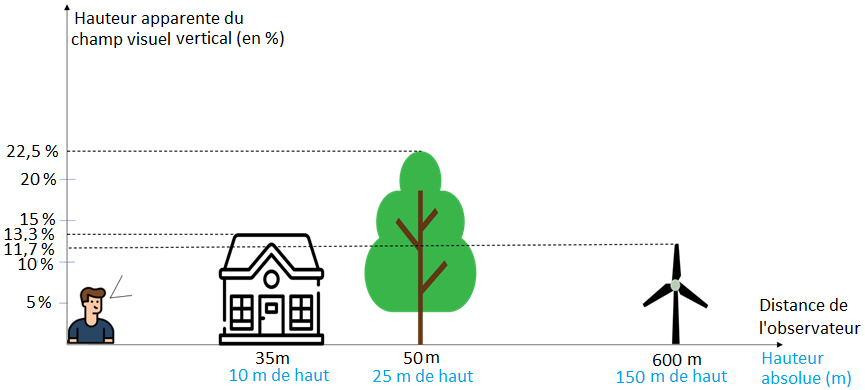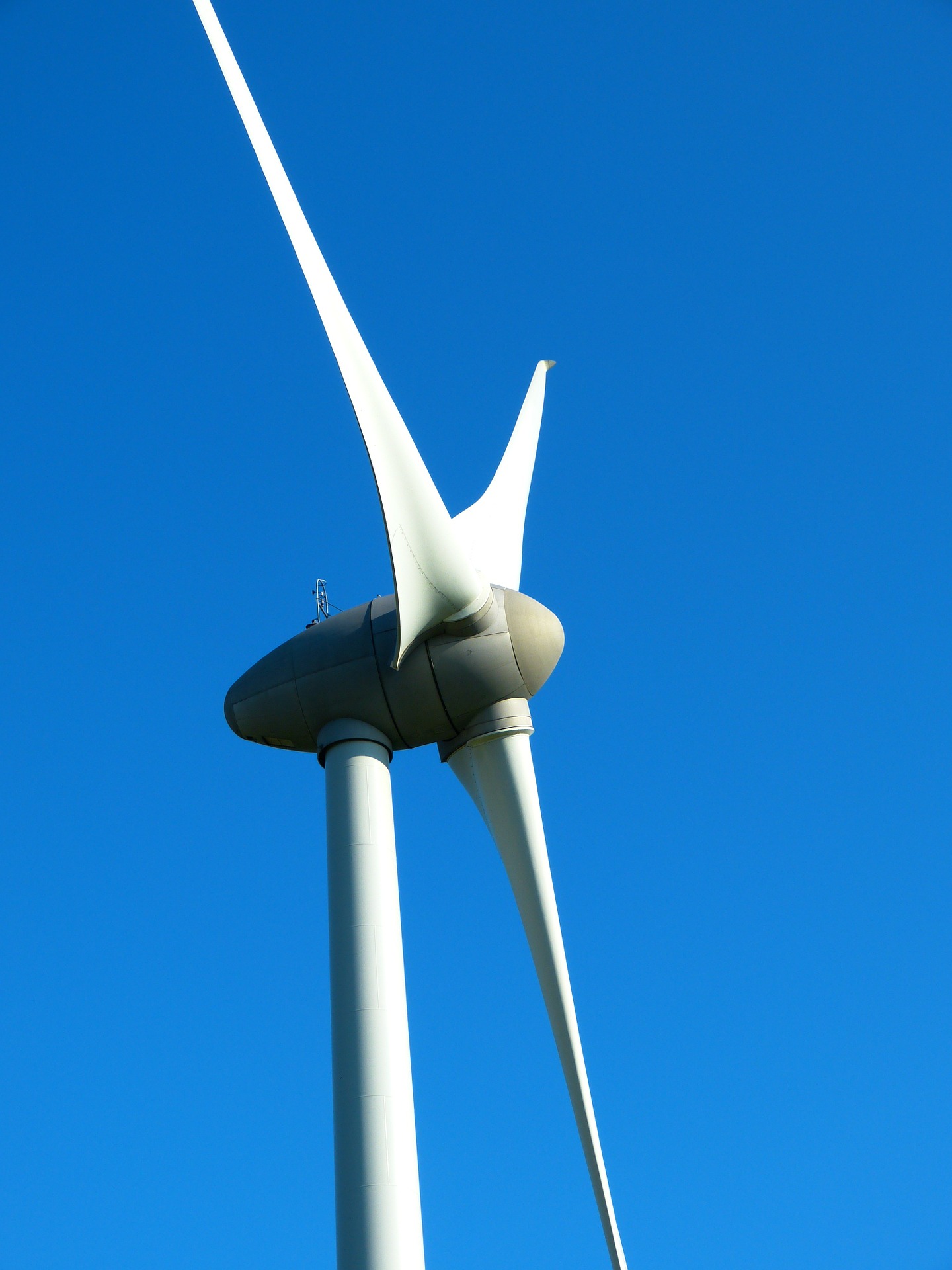What place does a wind turbine take in the landscape? Is it possible to objectify the vision we have of it? In general, the visual perception by the human eye of an object is conditioned by its size, shape, color and texture, but also by the distance that separates it from the observer.
This dimension or height is said to be apparent or relative and is at the very basis of the composition of landscape plans and photomontages.
Let’s go into the details and give some examples
Indeed, the place of an object in our field of vision is determined by its actual height but also by our viewing distance. If the relationship between these two parameters is constant then the perception of even different objects will however be similar.
Therefore, a wind turbine of 150m at the end of the blade observed at 600m (minimum distance from which a wind turbine can be from a house according to current regulations) is similar to:
- A 25m tree located 100m away;
- A 10m house located 40m away.
The ratio of 1 to 4 being kept (1 = height of the object and 2 = the observation distance), the space taken by these obstacles in our eyes is identical.
It is also possible to calculate the apparent height of an object in our visual space, namely the vertical place occupied by it in our field of vision. The apparent height is evaluated as a percentage of our maximum vertical viewing angle which is 120 degrees when we lift our head to the maximum.
The wind turbine described above having an actual height of 150m at the end of the blade will rise at an angle of 14 degrees. It will then occupy a little less than 12% of our field of vision. Mathematically, this observation is described and validated by Thales’ theorem.

In some of our studies, we use the “apparent height” tool in order to be able to compare wind turbines on the same basis with each other, taking into account their environment and location.
Finally, it is interesting to note that depending on the angle of observation, a tree can therefore be perceived as “bigger” than a wind turbine and even hide it. This phenomenon is particularly remarkable in a context where some new wind projects are moving towards coniferous forests.

